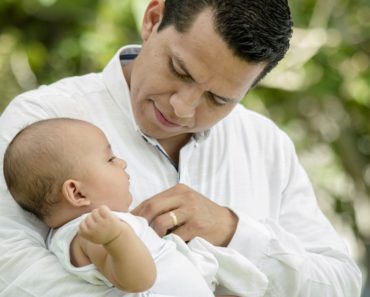Contents
- 1 Step Parent Adoption: Navigating the Challenges of No Father on Birth Certificate
- 2 Understanding Step Parent Adoption Process
- 3 Navigating Legal Requirements and Complexities
- 4 Emotional and Practical Considerations for Stepparents
- 4.1 Can a step parent adopt a child if there is no father listed on the birth certificate?
- 4.2 What are the legal requirements for a step parent to adopt a child in cases where the biological father is not listed on the birth certificate?
- 4.3 How does the process of step parent adoption differ when the biological father is not named on the birth certificate?
- 4.4 Related Posts
We will explore the process of step parent adoption when there is no father listed on the birth certificate. Learn about the legal steps involved, the importance of consent, and how this adoption can enhance the bond between a step parent and their child.

Step Parent Adoption: Navigating the Challenges of No Father on Birth Certificate
Adopting a stepchild can be a complex and emotionally challenging process, especially when the birth certificate does not list a father. In such cases, legal hurdles and social obstacles may arise that need to be addressed.
Legal Hurdles: When a child’s birth certificate does not include the name of a father, the biological father’s consent is often required for step parent adoption. However, if the biological father’s whereabouts are unknown, or if he refuses to give consent, this can complicate the adoption process. In some jurisdictions, it may be possible to terminate the biological father’s parental rights through legal proceedings, but this can be a lengthy and costly process.
Social Obstacles: Step parent adoption in cases where the birth certificate does not list a father can also face social challenges. Some people may question the legitimacy of the adoption or have negative perceptions about the absence of a biological father. It’s important for step parents to address these concerns and educate others about the reasons behind the absence of the father on the birth certificate.
Navigating the Challenges: To navigate the challenges of step parent adoption when there is no father listed on the birth certificate, it is crucial to consult with an experienced family law attorney who specializes in adoption. They can guide you through the legal requirements of your jurisdiction and help develop strategies for overcoming any potential obstacles.
Additionally, step parents can consider reaching out to support groups or online communities of other stepparents who have faced similar challenges. These communities can provide valuable advice, emotional support, and resources to help make the adoption process smoother.
In conclusion, step parent adoption can be complicated when there is no father listed on the birth certificate. However, by seeking legal guidance and support from like-minded individuals, these challenges can be navigated successfully.
Understanding Step Parent Adoption Process
The first subtitle focuses on explaining the step parent adoption process in the context of “no father on birth certificate” situation. This section should provide detailed information about the legal steps, requirements, and challenges involved in step parent adoption when the biological father is not listed on the birth certificate. It should highlight the importance of obtaining consent from the absent biological father or pursuing termination of parental rights through legal means.
The second subtitle delves into the legal requirements and complexities associated with step parent adoption when there is no father listed on the birth certificate. It should discuss the need for the step parent to establish a legal relationship with the child and demonstrate that they can provide a stable and nurturing environment for the child’s upbringing. This section should address factors such as home studies, background checks, court hearings, and the involvement of social services in the process.
Emotional and Practical Considerations for Stepparents
The third subtitle explores the emotional and practical considerations that stepparents may encounter during the step parent adoption process. This section should highlight the potential challenges, such as dealing with the absent biological father’s objections or reluctance to surrender parental rights, along with the emotional impact it may have on all parties involved. It should also provide guidance on how stepparents can navigate these challenges while being understanding and supportive of their stepchild’s feelings and needs. Practical tips on seeking legal counsel, gathering supporting documentation, and building a strong case should also be included.
Can a step parent adopt a child if there is no father listed on the birth certificate?
Yes, a step parent can potentially adopt a child even if there is no father listed on the birth certificate. However, the specific requirements and procedures for step parent adoption vary depending on the jurisdiction. It is important to consult with an attorney specializing in family law or adoption to understand the applicable laws and regulations in your specific jurisdiction.
In some cases, the biological father may need to voluntarily terminate his parental rights for the adoption to proceed. This typically requires his consent and may involve legal proceedings. If the father is unknown or cannot be located, there may be additional steps involved in the adoption process.
It is important to note that the adoption process can be complex and time-consuming, requiring the involvement of legal professionals and the approval of the court. An attorney with expertise in adoption law can guide step parents through the necessary steps and represent their interests throughout the process.
Overall, while it is possible for a step parent to adopt a child with no father listed on the birth certificate, it is crucial to consult with an attorney to ensure compliance with applicable laws and to navigate any challenges that may arise during the adoption process.
What are the legal requirements for a step parent to adopt a child in cases where the biological father is not listed on the birth certificate?
In cases where the biological father is not listed on the birth certificate, the legal requirements for a step parent to adopt a child vary from country to country and even within different states or provinces.
In general, the first step for a step parent in this situation is to establish legal paternity or terminate the rights of the biological father. This can be done through a process called “legitimation” or “paternity establishment,” which typically involves DNA testing and court proceedings. The specific requirements and procedures for establishing paternity vary depending on the jurisdiction.
Once the paternity is established or terminated, the step parent can proceed with the adoption process. Common requirements for step parent adoption may include:
1. Consent of the biological mother: The biological mother must usually provide written consent for the step parent adoption, acknowledging their willingness to transfer parental rights to the step parent.
2. Home study evaluation: A home study evaluation is often required to assess the suitability of the step parent and their household for the adoption.
3. Background checks: Step parents typically undergo background checks, including criminal history and child abuse clearances, to ensure the safety and well-being of the child.
4. Termination of parental rights: If the biological father is not listed on the birth certificate, his rights may need to be terminated before the step parent adoption can proceed. This can be done through voluntary termination or by demonstrating that the biological father has abandoned the child or is unfit to parent.
5. Adoption petition: The step parent must file an adoption petition with the relevant court, providing necessary documentation and evidence to support the adoption.
It’s important to note that these requirements are general guidelines, and you should consult with an attorney specializing in family law in your jurisdiction for specific advice and guidance on the step parent adoption process.
How does the process of step parent adoption differ when the biological father is not named on the birth certificate?
The process of step parent adoption can differ when the biological father is not named on the birth certificate. Generally, when the biological father is not named on the birth certificate, it indicates that he may not have established legal paternity. In such cases, the step parent adoption process may be somewhat easier, as there is no need to terminate the legal rights of the biological father.
However, it is important to note that the laws and procedures surrounding step parent adoption vary by jurisdiction. It is recommended to consult with an attorney or adoption professional who specializes in family law in your specific jurisdiction for accurate and up-to-date information.
In general, the step parent adoption process involves several key steps. These may include:
1. Consent or termination of parental rights: If the biological father’s rights have not been legally established, the step parent adoption process may involve obtaining his consent to the adoption or terminating his parental rights. This could involve demonstrating that he has abandoned the child or is unfit as a parent.
2. Home study: The prospective step parent may need to undergo a home study, which typically includes interviews, background checks, and home visits by a social worker or adoption agency representative. The purpose of the home study is to assess the suitability of the prospective step parent to adopt.
3. Court proceedings: Once the necessary consents or parental rights terminations have been obtained, the step parent adoption case will be filed in court. This may involve submitting documentation, attending hearings, and presenting evidence to support the adoption.
4. Finalization: After all the necessary legal steps have been completed, the court will issue a final decree of adoption, officially recognizing the step parent as the legal parent of the child.
It is important to work with an experienced attorney throughout the step parent adoption process to ensure compliance with all legal requirements and to navigate any potential challenges that may arise.
In conclusion, step parent adoption can be a complex and emotional process, particularly in cases where there is no father listed on the birth certificate. However, it is a legally viable option for stepparents wishing to formalize their relationship with their stepchild and ensure their parental rights and responsibilities.
Step parent adoption provides a pathway for such individuals to establish a legal connection with their stepchild, granting them the same rights and obligations as a biological parent. It allows for a more stable and secure family environment, promoting a sense of belonging and unity within the blended family.
Although not having the father’s name on the birth certificate might present additional hurdles in the adoption process, working closely with an experienced attorney can help navigate any challenges that may arise. They can guide the stepparent through the necessary legal procedures and assist in gathering the required documentation and evidence to support the adoption.
The court’s primary concern in step parent adoption cases is always the best interests of the child. Thus, demonstrating a positive and nurturing relationship between the stepparent and stepchild is crucial. Providing evidence of the biological father’s absence or lack of involvement is also essential in addressing any concerns the court may have.
Overall, while the process of step parent adoption without a father listed on the birth certificate can be more complex, it is a viable option for stepparents seeking legal recognition and security in their relationship with their stepchild. With proper legal guidance and perseverance, stepparents can successfully navigate this journey and provide a loving and stable home for their blended family.







